Watching sports in VR is a scrimmage now, but the pro season is coming
Currently in training, but on its way to the majors
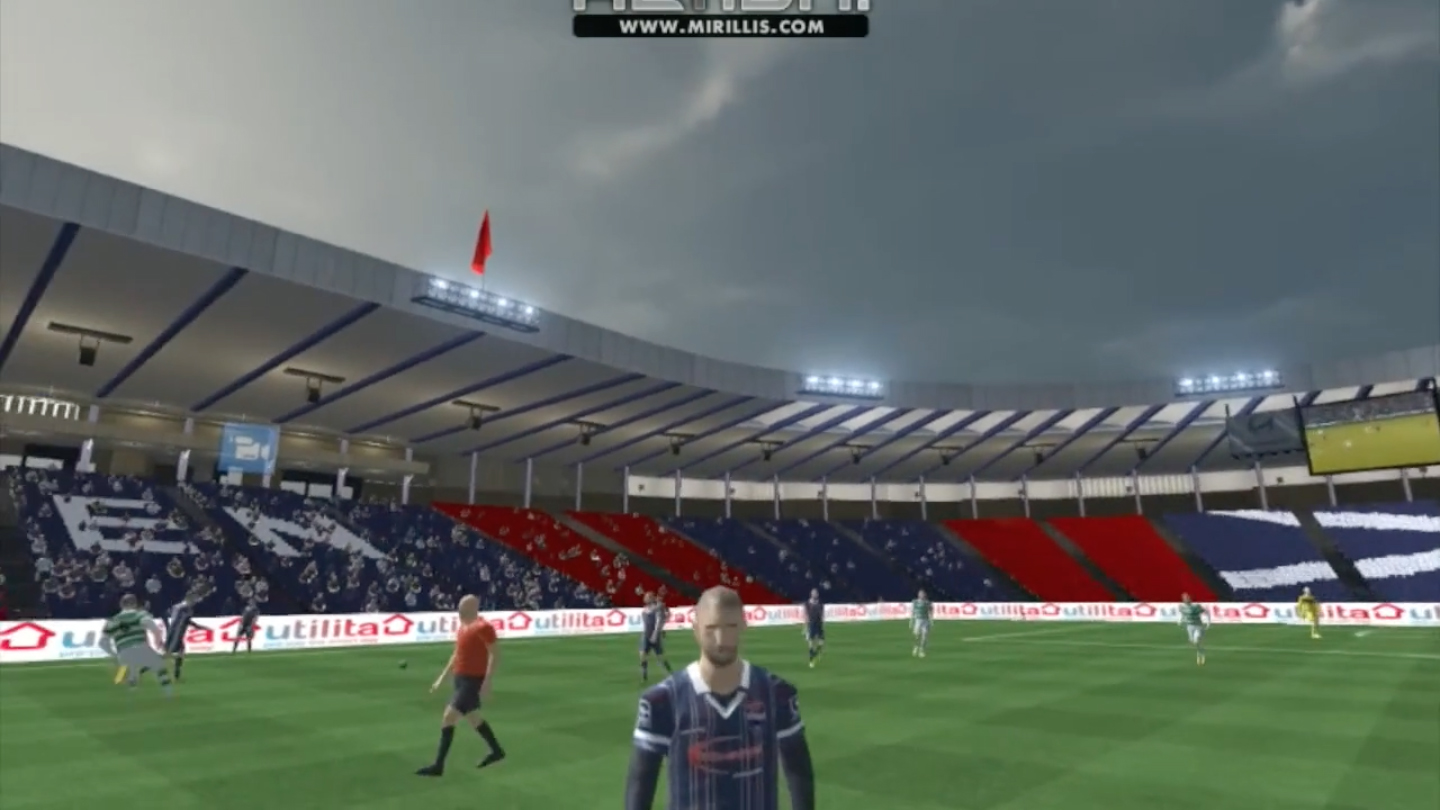
I ran onto a soccer field, yelled at English footballer Wayne Rooney and, when I was through, politely proceeded to watch his derby.
Now, I didn't have harmful intentions at the time, only pure intrigue about how Virtually Live – a media company that specializes in broadcasting virtual reality replays of live sporting events – could change how we watch football and other events forever.
During a demonstration of the software at this year's Game Developers Conference (GDC), I was able to walk around Etihad Campus, home to Manchester City's football team Manchester United, during one of the team's matches.
What I was watching (experiencing?) wasn't exactly a one-to-one re-creation of the match-up, but rather a new real-time/virtual reality hybrid wherein I was able to control my viewpoint throughout the match.
Instead of watching a 3D version of 2D game, however, the football stadium and players on the field were digitally recreated from real-life broadcast. (That meant no in-game commentary, unfortunately, but that's something I can accept at this point in the game.)
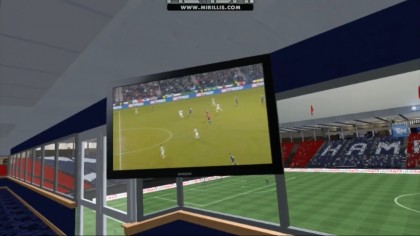
Experiencing football – er, soccer for the US folks – in VR was like walking through a house party at a museum: there was plenty going on, but none of it seemed all that interactive.
Like a young athlete running drills, I could see the technology's potential, even if it's not quite ready for primetime adoption.
Get daily insight, inspiration and deals in your inbox
Sign up for breaking news, reviews, opinion, top tech deals, and more.
Don't blink (or look away)
What makes Virtually Live better than a standard 2D stream is that it gives you the free will to follow your favorite athlete and see what he does when he's not in the spotlight. Want to stand next to Rooney all match long? You absolutely can do that. Want to move alongside Messi when he's pulling a Maradona? Be my guest.
But, sometimes – just like a defender going up against one of the greats – you can be caught out of position, missing a goal that's happening at the other end of the pitch or an amazing save because you had your head turned.
The user interface doesn't give any warning that you might miss a crucial moment. The action just keeps moving forward without you … which is logical considering that's how the sport is really played, but also extremely difficult to take in from a spectator's point of view.

Another holdup for Virtually Live is the graphics. While I was on the field, I couldn't recognize anyone's likeness, disconnecting me from the action immediately. Most of the player renderings can be compared to the original Xbox and PlayStation 2 days – rough polygonal shapes that almost resemble the players, but are too generic-looking to portray your heroes in the detail they deserve.
Another of the compromises the developers had to make for this demo was limited traversal throughout Etihad Campus. You're able to control where you position the camera to see the field but, because of certain limitations on capture technology, not every angle in the stadium is available to you.
Bend it like Google
Virtually Live is still in beta, but companies are betting that the future of sports content on TV will bring fans closer to their favorite teams. Google has already laid some of that groundwork by shipping more than 5 million Google Cardboard viewers since launching back in 2014.
"The future of sporting, [and] the future of event-driven things I believe are very interactive," Google VR business development team lead Aaron Luber tells us during the demo. "You can put people in the seat or on the floor, but interactivity into virtual reality? That's going to be a game-changer. "

With more consumers cutting the cord, the chance to experience their favorite sport in virtual reality might be the next best thing for fans.
But will there be enough content for consumers to see value?
If you build content, they will consume
Recently, Oculus and Turner Sports partnered to bring the NCAA Men's Final Four Basketball Tournament to VR, an event they called " March Madness Live."
For the stream, Oculus posted two 180-degree cameras from the post and mid-court to allow viewers to observe the games from the comfort of their own living room, but feel like they were at the games.
And while the program was more or less successful, in this nascent industry big players are still waiting for a market to be established before diving in.
Not that I blame them. They have every reason to be skeptical.
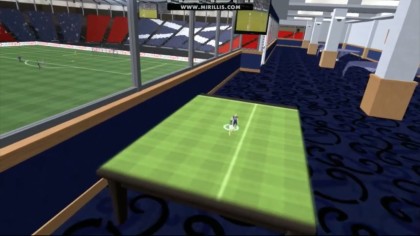
ESPN previously made a huge investment in 2010, when 3D televisions were starting to hit the market by broadcasting all of its content, 24 hours a day, on ESPN 3D. Dead-slow North American adoption of 3D televisions, coupled with a lack of advertising money and quality programming became an issue, and led to ESPN 3D getting shuttered in 2013.
As of this writing, ESPN has not announced a VR initiative for original content, and I fully understand that decision. When I enjoy sports, it's with my friends or family all circling around a single TV, watching the event together. Until virtual reality can recreate that experience for everyone in the room, I'm not quite sold.
A potential pinch hitter for sports watching
Unwilling to take a risk by investing in the new recording technology needed to produce 360-degree videos, most networks are outsourcing production to third parties, like NextVR.
In the beginning of the year, Fox Sports partnered with the company to bring one of the biggest events in NASCAR, the Daytona 500, and the Big East Tournament to face-bound screens. But, NextVR's biggest test would come when the company was contracted to produce virtual reality video for the opening game of the 2015-2016 NBA season when the Golden State Warriors played the New Orleans Pelicans.
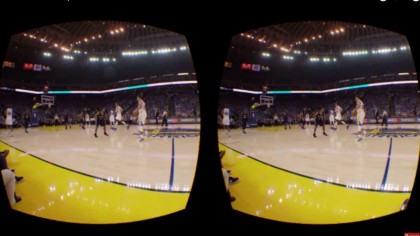
The event, which is still available to watch on YouTube, only allowed fans to view the action from two locations, standing room or from half-court.
But, like Virtually Live, it had problems, too. One of the biggest issues that occurred was the frame rate would drop consistently throughout the game. Many times you would see a player shoot but the camera wouldn't show you whether they made it. I'm not sure if you've ever watched a game where you can't see who's winning, but I can attest it's not a fun experience.
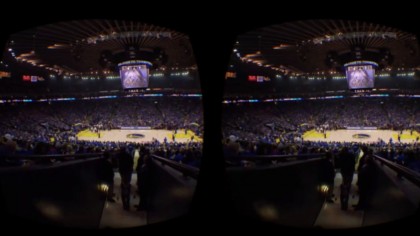
Watching sports in virtual reality – regardless of the platform – is an entertainment experiment with plenty of potential even if the technology to capture it is still playing catch up with the technology used to view it. With more phones able to run VR programs, sports on headsets like the Oculus Rift, Samsung Gear VR, HTC Vive and Google Cardboard look to eventually become a welcome alternative for folks that want to experience a home game without having to pay for parking.
Will the traditional sports watching experience go away? For me? Absolutely not. Until the total broadcast presentation is in sync from VR to HD(R) and I can stand wherever I like, whenever I like, I'm not going to toss my old TV just yet.